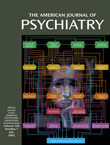This slender volume is one of five titles for 2001 in volume 20 of the American Psychiatric Press Review of Psychiatry, all of which are designed to “inform clinicians of the latest findings” and thereby counter the growing epidemic of misinformation about mental health issues, fueled by television, Web, magazine, and newspaper accounts that usually fail to capture the balanced, evidence-based approach clinicians desire. The focus of this volume is recurrent depression, a disabling problem that is for the most part inadequately treated, despite numerous advances in the field over the last decade.
Four central chapters focus largely on treatment themes and are bracketed by initial and final chapters that have a more public health perspective, highlighting, respectively, key factors that contribute to the overwhelming “burden” of recurrent depression and key steps that need to be taken to shift our current approach and adopt a more preventive and “proactive” paradigm of treatment. The core chapters, written by top experts in the field, cover gender-specific issues, including pregnancy, postpartum, and menopause; review evidence about the relative long-term and preventive efficacy of medication and psychotherapies; focus on the special population of patients with bipolar disorder; and review novel brain stimulation treatments that could improve future treatment options.
The book is not meant to be an exhaustive treatment of every aspect of this subject but seems to have selected particular areas likely to be of interest to clinicians. The chapter on depression in women contains two very useful tables that compile information on the teratogenicity of relevant psychotropics and a timely, evidence-based discussion about the relative value of estrogen treatment for postmenopausal depression (it is probably effective for some but should not supplant initial pursuit of better-studied modalities). Similarly, the chapter “Chronic and Recurrent Depression” tells a story, rather than offering an exhaustive review, with a focus on key studies over the past two decades that established the value-added effect of psychotherapy, but suggests this may be true only if it is administered with sufficient frequency and intensity. The chapter on bipolar illness focuses on interepisode management, providing advice about frequency of visits, family involvement, the destabilizing effects of inadequate sleep and light exposure, and the importance of the therapeutic relationship, especially for the prevention of the manic phase. Finally, the chapter on “minimally invasive brain stimulation” modalities largely focuses on repetitive transcranial magnetic stimulation and vagal nerve stimulation, providing a cautious, sober assessment of the limited knowledge in this area. The authors’ caution about the need to limit enthusiasm for vagal nerve stimulation until it is tested in controlled studies is particularly timely in the light of recent news that the first controlled trial for this treatment was negative, casting some doubt on the open trials reported in this chapter, although the length of this trial may have been too short to measure delayed effects.
For all its strengths, the book has some limitations. The chapters have different organizations, varying approaches to the “evidence-based” theme (e.g., citation of uncontrolled, anecdotal evidence), and several ways to focus on treatment (some focus exclusively on treatment, others focus on epidemiology, clinical features, and risk factors as well). Although this diversity allows the interested clinician to read chapters separately, without having to appreciate the book as a whole, it does detract from the book’s attempt to present an integrated view of the treatment of recurrent depression. To some extent, the excellent initial and concluding chapters by the editor, which seem to echo a number of themes and concepts covered in the other chapters, serve this purpose and can be read by themselves to accomplish this task.

